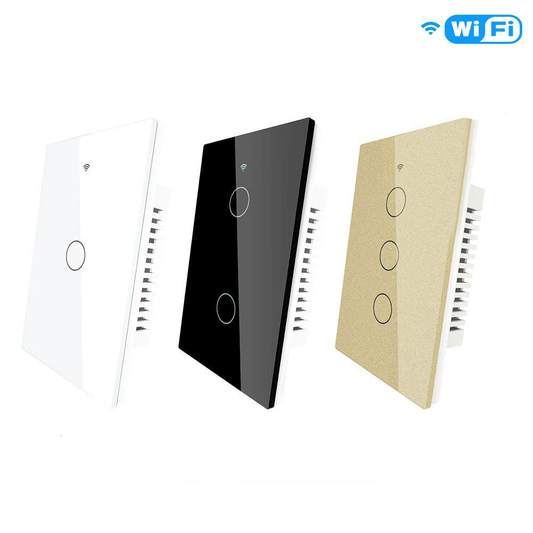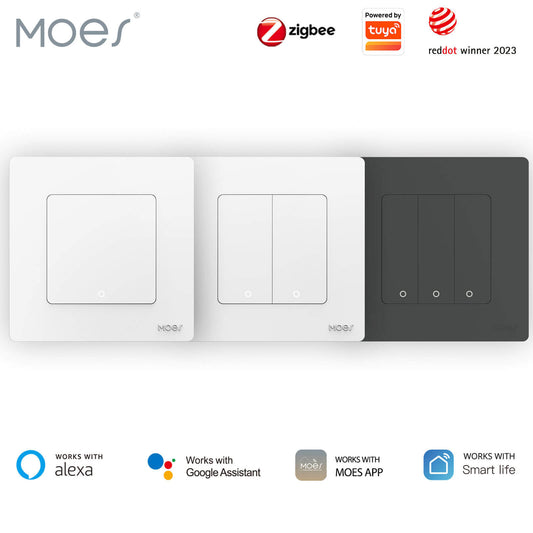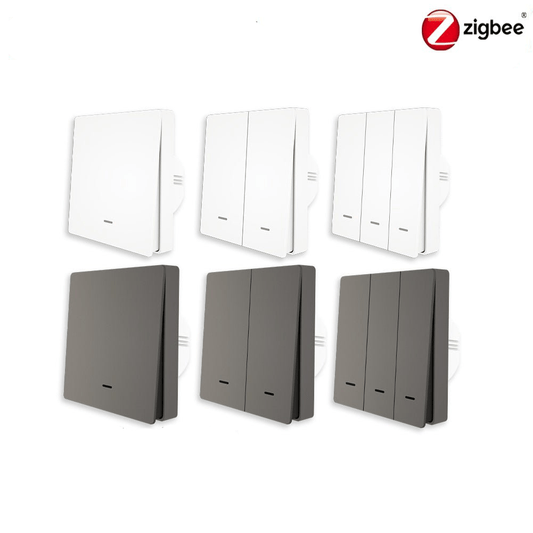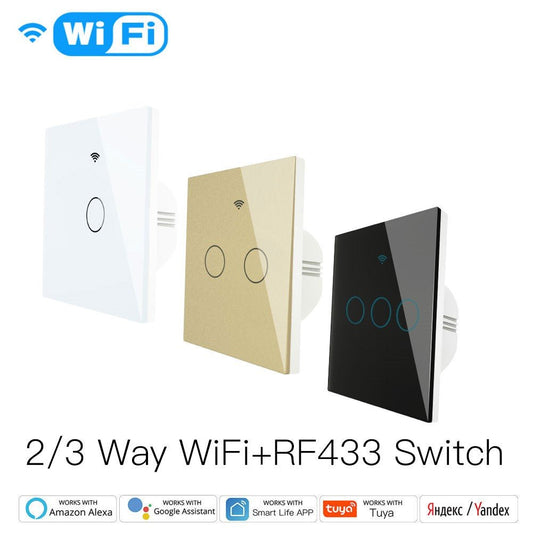In recent years, both households and utility companies have witnessed significant advancements in energy technology. These innovations primarily focus on improving communication between various parts of the grid, with one of the most popular "smart" technologies being the smart thermostat. If you're using a manual or programmable thermostat and considering an upgrade, there are many reasons to opt for a smart thermostat.
Whether your goal is to save on energy bills or increase your comfort at home, investing in a smart thermostat is a smart decision. Before investing in a smart thermostat, there are several factors to consider. Which model is best suited for your home? Is it compatible with your HVAC system? Will you need a professional for installation? Additionally, consider extra convenience features such as learning capabilities and voice control. Don’t worry! This blog will outline the key factors to consider when purchasing a smart thermostat, helping you make the best choice based on your household needs.

What is a Smart Thermostat
A smart thermostat is a home appliance equipped with Wi-Fi wireless transmission functionality. By recording indoor temperature data and intelligently learning the user’s habits, it can automatically adjust the indoor temperature to ensure the comfort of your home. These devices not only enhance home comfort but also contribute to environmental sustainability and energy savings, offering an energy-efficient, year-round pleasant living experience.
Smart thermostats are typically equipped with sensors that record our daily habits. They automatically generate heating and cooling schedules that suit our lifestyle, eliminating the need for manual programming. These devices can gather data such as outdoor temperature, humidity, sleep times, and wake times, and use this information to automatically adjust the indoor temperature.
Difference Between Smart Thermostats and Programmable Thermostats
Many people are accustomed to using standard thermostats, especially since most homes are equipped with them upon moving in. However, if you seek a more advanced temperature control experience, a smart thermostat is an ideal choice. It supports Wi-Fi, allowing you to easily adjust the home temperature through connected devices. Smart thermostats are often equipped with LED touchscreens, providing a more user-friendly interface.
Compared to programmable thermostats, smart thermostats not only allow users to set temperature schedules but also connect to the home’s Wi-Fi network. Smart thermostats enable users to remotely control heating and cooling settings in their home via smartphones, tablets, or computers, offering greater convenience and control than traditional manual or programmable thermostats. This means that whether you are at work, on vacation, or relaxing at home, you can fully manage your home’s temperature settings.

8 Key Factors to Consider When Choosing a Smart Thermostat
1. Compatibility with HVAC Systems
- Check the list of compatible models on the manufacturer's website.
- Consult a professional or explore online discussion forums.
- If you have separate heating and cooling systems, you may need to install a smart thermostat for each system.
2. C-Wire Requirements
Many smart thermostats require a C-wire (common wire) to function properly. The primary function of the C-wire is to provide continuous power to the thermostat. If your HVAC system does not have a C-wire, you can opt for a thermostat that does not require one, or consider the following options:
- Choose a model that comes with a power adapter, which can add a C-wire to your system.
- Hire a professional technician to install a C-wire.
3. Ease of Installation
- Check the wiring of your existing thermostat, as wiring systems are typically color-coded.
- Take a photo to record how the wires are connected, which will help with installing the new thermostat.
- Refer to the instruction manual or online tutorials to understand the installation process.
After installation, download the app and connect the thermostat to your home’s Wi-Fi network. Ideally, the thermostat should be placed on an interior wall in the center of your home, away from direct sunlight and drafty windows or doors.
4. Smartphone Compatibility
Before purchasing a smart thermostat, ensure that its app is compatible with your phone’s operating system. Most smart thermostats offer apps for both Android and iOS, but if your phone uses a different operating system, be sure to verify compatibility. Additionally, it’s wise to check whether the app requires a subscription.
5. Smart Home Integration Options
Many smart thermostats can be integrated with other smart devices and home systems. This includes voice control through Amazon Alexa or Google Assistant, as well as connecting with other smart devices like lights and fans. For example, linking smart windows with your thermostat allows the HVAC system to automatically shut off when a window is opened.
6. Temperature and Motion Detection Sensors
For better climate control in your home, choosing a thermostat with temperature and motion detection sensors is a great option, or you can purchase sensors separately to sync with the thermostat. These sensors can detect the temperature in different areas and communicate wirelessly with the main thermostat. Motion sensors can detect whether anyone is home and adjust the temperature accordingly to enhance comfort.
7. Convenience Features
In addition to the basic features, some smart thermostats offer extra convenience, such as:
- Artificial Intelligence: Smart thermostats can create personalized heating and cooling schedules by learning from user behavior.
- Geofencing: This feature uses your smartphone’s location to automatically adjust the temperature based on whether you’re home or away.
- Vacation Mode: Optimizes energy usage while you’re away.
- Air Filter Reminder: Alerts you when the filter needs cleaning.
8. Smart Display
Selecting a smart thermostat with an easy-to-use interface is essential. Touchscreens and status displays make it easier to adjust settings and view current information, such as temperature and humidity levels.
MOES Hot Sale
|
Model |
WiFi Thermostat PJ01 |
ZigBee Radiator Valve TRV 601 |
WiFi Radiator Valve TRV 801 |
|
Size |
86mmx46.1mmx86mm |
58.4mm x95.5mm x58.4mm |
52.4mmx97.4mm x 52.4mm |
|
Network Protocol |
WiFi |
ZigBee |
WiFi |
|
Gateway Required |
× |
√ |
× |
|
Self-Installation |
√ |
√ |
√ |
|
APP Remote Control |
√ |
√ |
√ |
|
Voice Control |
√ |
√ |
√ |
|
Smart Learning |
Smart Adjustment |
Smart Adjustment |
Smart Adjustment |
Note:Before purchasing, please verify through the official website whether your home's HVAC system is compatible with the product. The product details page clearly shows the wiring diagram for self-installation (as shown below)

What should you pay attention to when installing a smart thermostat yourself?
- Compatibility Check:Before purchasing, be sure to test on the brand's official website to confirm whether your home's HVAC system is compatible with the product.
- Photographic Reference:It is advisable to take a photo of the wiring of the old thermostat before installation, allowing you to cross-check and correctly position the new connections.
- Power Off:Remember to turn off the power to your home's heating and cooling system before removing the old thermostat.
- Placement Consideration:The smart thermostat should be installed away from direct light sources (such as sunlight) to avoid affecting the accuracy of its temperature sensing.
Ready to shop?
Compare models and find the right smart thermostat for you in the MOES smart thermostat product finder.







